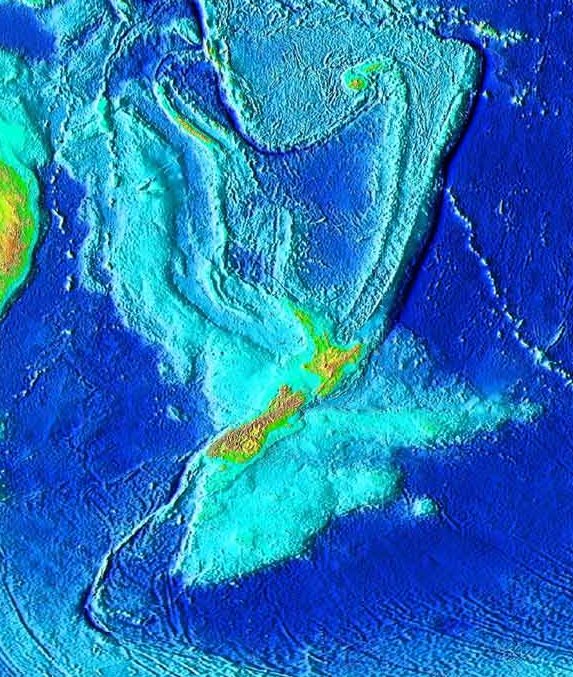Geologists have something new to add to the world map: a lost eighth continent.
According to scientists, this continent, called Zealandia, is not a huge land formation like the rest, but rather small pieces that are above sea level. This includes New Zealand, New Caledonia and other bits of land in the Pacific Ocean. The rest of the continent is under the ocean, Live Science reports.
Nick Mortimer, a geologist with GNS Science in Dunedin, New Zealand, said,
I hope Zealandia will now start to appear on world maps which show the other continents. There is an extra one, and it is as real as all the others.
This new study collected years of geographic evidence showing a hidden continent around New Zealand. The first of this was the ocean floor around the island nation: the continental shelves of Zealandia are around 3,280 feet below sea level, while the nearby oceanic crust is 9,800 feet below that. Like other continents, this one has a vast range in height, from the sub-ocean depths to as high as Aoraki/Mount Cook.
The next line of evidence pointing to Zealandia’s existence is an extensive study of the rocks lying under the waves. Over the past 20 years, geologists have collected rock samples from the sea floor. The nearby oceanic crust is made of basaltic rocks while the crust is made of various rock types, including granite, limestone and sandstone. The first are fairly recent, while the latter are ancient – the kind that makes up continental crusts.
Lastly, there’s a narrow strip of crust separating Australia from Zealandia, which means they are actually two separate continents. Zealandia was created when the supercontinent Gondwana broke into parts 85 million years ago, and an ocean began forming between the countries.
Mortimer said, “Zealandia is somewhat unusual, in that just before it separated from the supercontinent of Gondwana, it got stretched.” Regarding its place on the map, he added, “I think it will focus minds; it’s just a more correct depiction of the geology and tectonics of this corner of the planet.”
The study was published in the journal GSA Today.
























